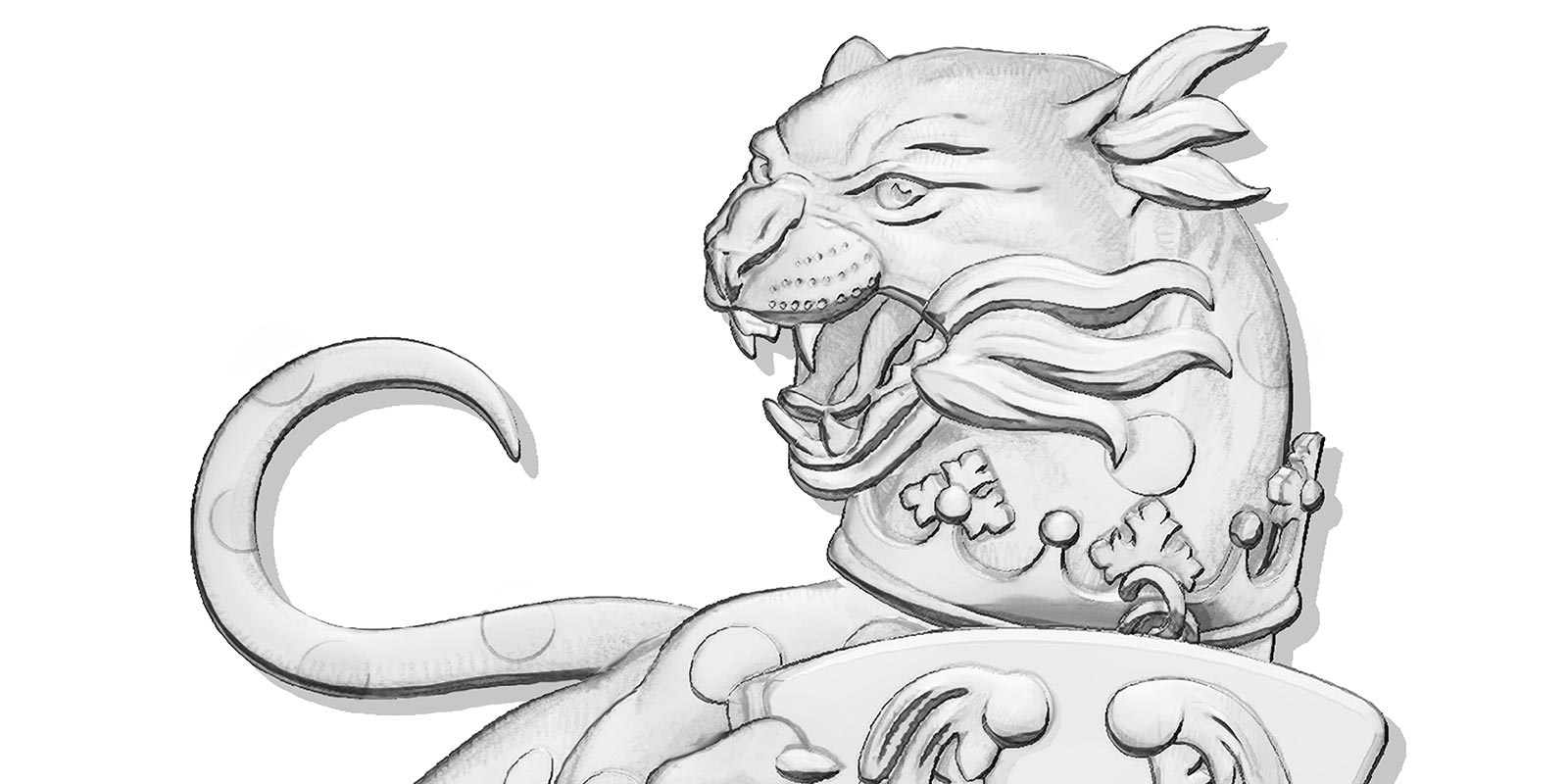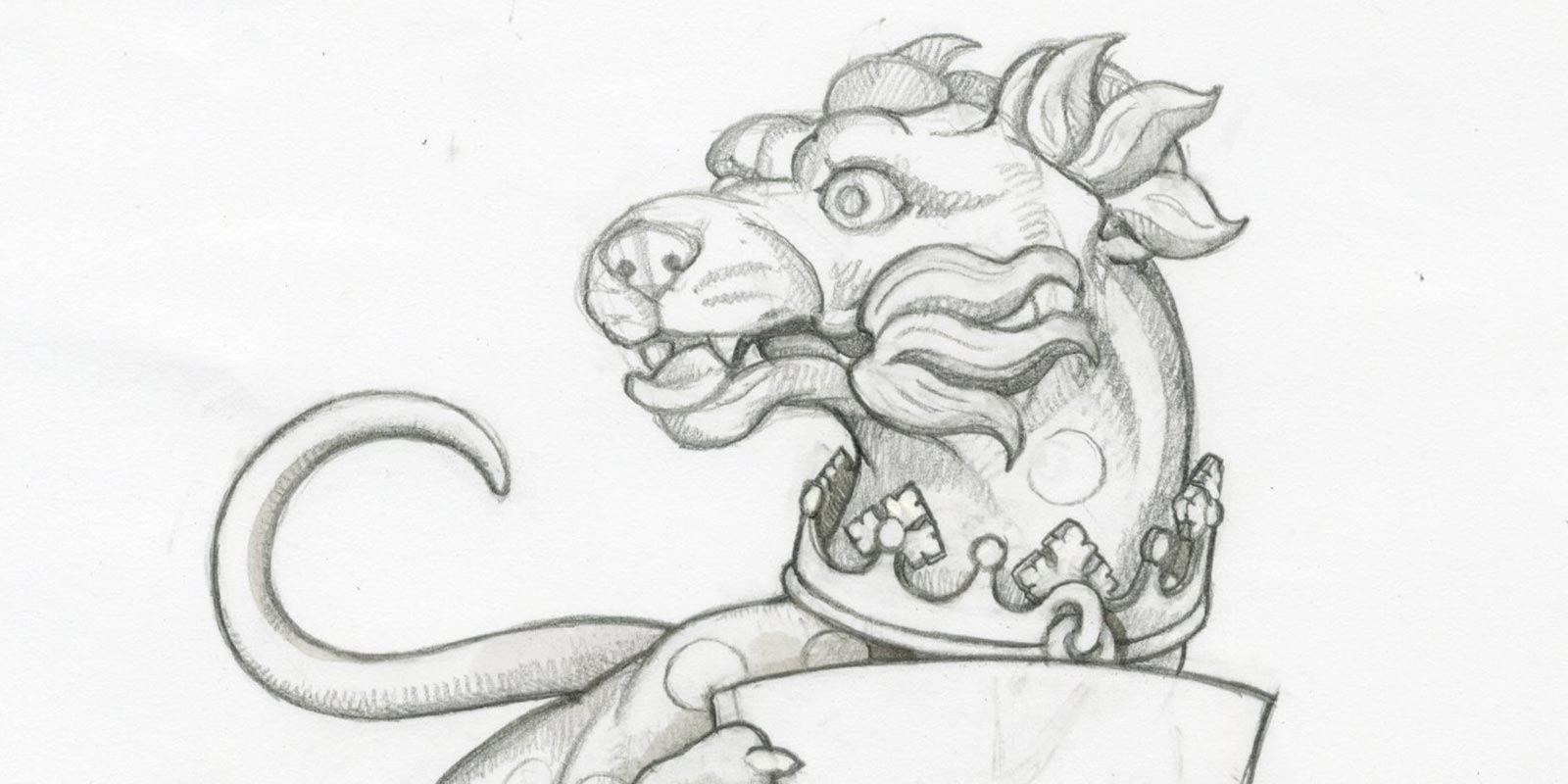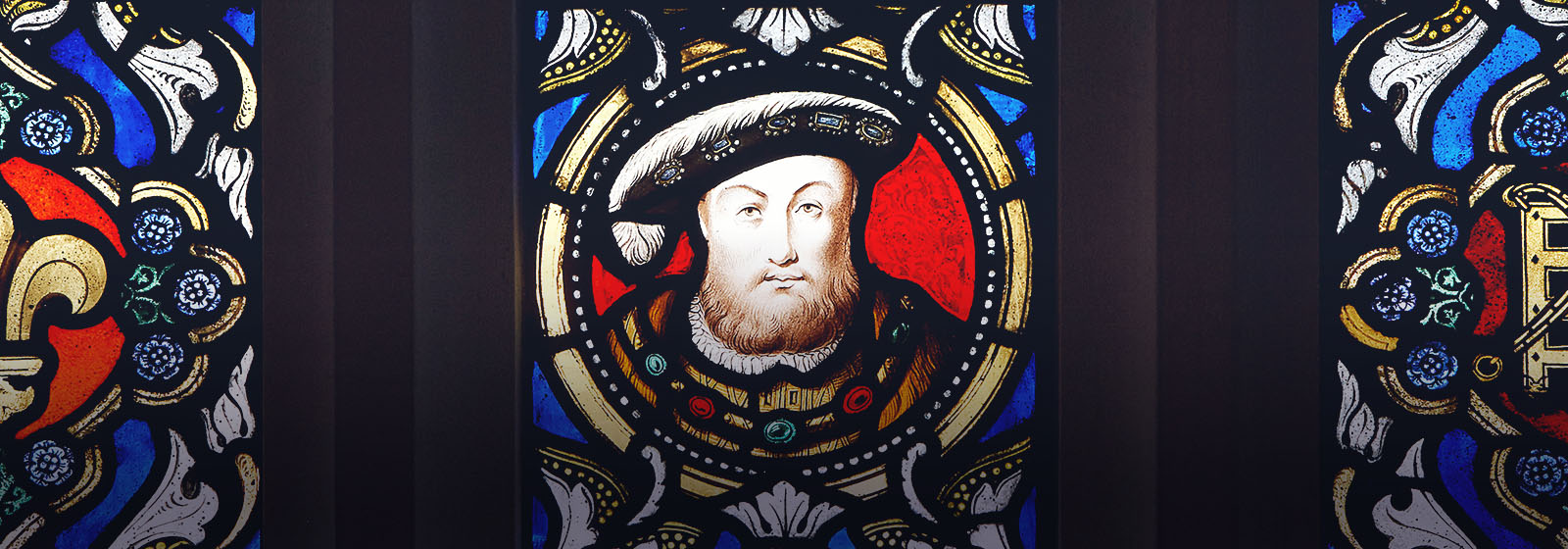David Lawrence, an illustrator and sculptor with more than 30 years of experience that includes coin design, is the designer for all ten coins that will comprise The Royal Tudor Beasts Collection. We talked to David about his creative process and inspiration for the Seymour Panther, the first coin in the series – as well as what drew him to the wider project.

What attracted you to this project?
“I find the breadth and depth of The Royal Tudor Beasts Collection extremely appealing. With ten coins and ten beasts to design, it’s a challenging brief to tackle but one that is nevertheless exciting – especially with the subject being so rich in terms of heraldry and historical significance.”
How did you approach the initial design concept for the Seymour Panther?
“The brief asked for a design that was a natural and realistic representation of the beast, so I primarily used that as a guideline. If I steered the design to something that was too faithful to the Tudor carvings at Hampton Court [Palace], the panther itself would look somewhat strange.
“Although, to make it original, I didn’t want the design to be a wholly naturalistic representation of the beast. I had to walk the fine line of combining these naturalistic elements of a panther’s anatomy with a stylised, heraldic depiction of the beast to fit the overarching concept.”
Did you have a particular design process for the coin?
“I suppose everyone’s process of working is slightly different. But for me, and from a personal perspective, the process has become easier thanks to the internet providing such a rich and easily accessible source of information. So from a research perspective you can be much more selective in terms of the images you want to find in order to draw inspiration from. I never design anything using a computer, instead opting to create my designs by hand using propelling pencils.
“My creative process in general is a case of digesting the brief, conducting further research, and then taking a step back to allow my subconscious to do the hard work, inevitably producing a well-rounded idea.”

Was there anything you knew you wanted to include from the outset, or anything that inspired you in particular?
“The beasts we see on the Moat Bridge at Hampton Court Palace are very stylised, in the sense that they’re created through a Tudor frame of reference. The Tudors would draw beasts that they had never before seen, basing their interpretations off reports or word-of-mouth. Therefore, these beasts are roughly 70% fictionalised. My aim was to take inspiration from these Tudor-carved beasts and modernise them, without losing their historical or heraldic importance.
“I was also lucky in that I received an extremely detailed briefing document from The Royal Mint that included plenty of photographs of the beasts, coupled with extensive background information sourced from Historic Royal Palaces. So the beasts became my primary source of inspiration as they stand, in situ, on the Moat Bridge.”
What are the main challenges you have encountered so far, if any?
“Designing the Seymour Panther has been a really enjoyable experience for me. I suppose the great challenge that will arise as the series progresses is ensuring each beast has a sense of originality in its design. When you’re working on the concentrated canvas of a coin, the design itself can become restricted. So with these beasts I’ve had to create a formula I can apply throughout the series in order to capture the pose for each beast sufficiently within the restricted space. Combining this restriction with the aim of encapsulating heraldic meaning in the design is quite a challenge. However, it’s one I’m relishing and looking forward to working on throughout the series.”
THE ROYAL TUDOR BEASTS
Be Inspired
MAKING OF A DYNASTY
Find out more
THE SEYMOUR PANTHER
Find out more
15 FUN FACTS ABOUT HENRY VIII
Find out more
THE ROYAL TUDOR BEASTS COLLECTION
Find out more

© Historic Royal Palaces 2021 Produced under licence from Historic Royal Palaces Enterprises Limited

